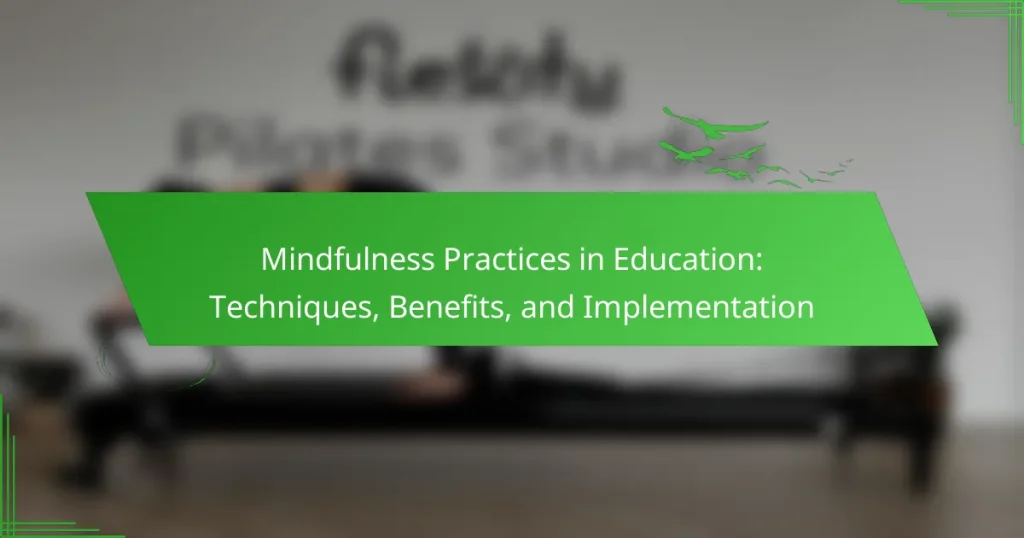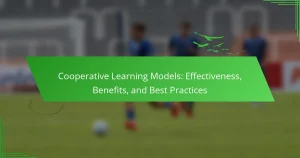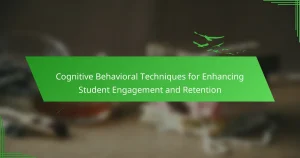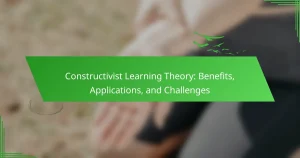Mindfulness practices in education enhance student focus, emotional regulation, and overall well-being. Techniques such as focused breathing and body scanning promote relaxation and stress reduction. Implementing these practices can improve academic performance and foster better interpersonal relationships. However, challenges like resistance from educators and time constraints may hinder effective integration in schools.
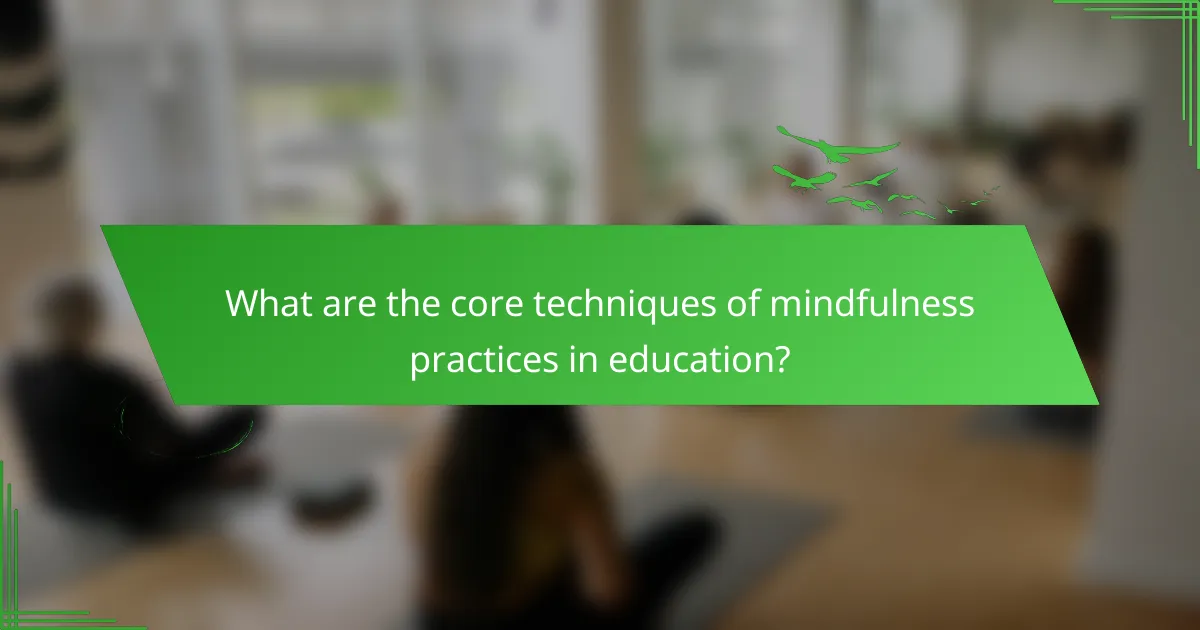
What are the core techniques of mindfulness practices in education?
Mindfulness practices in education utilize techniques such as focused breathing, body scanning, and mindful observation. These techniques enhance students’ emotional regulation, attention, and overall well-being. Focused breathing encourages present-moment awareness, while body scanning promotes relaxation and stress reduction. Mindful observation fosters a deeper connection to learning through enhanced focus on the environment and experiences. Implementing these techniques can lead to improved academic performance and better interpersonal relationships among students.
How do mindfulness techniques differ in various educational settings?
Mindfulness techniques vary significantly across educational settings, adapting to specific needs and environments. In primary schools, practices often focus on simple breathing exercises and guided imagery to enhance emotional regulation. In contrast, secondary education may incorporate mindfulness into stress management workshops, fostering resilience during exams. Higher education settings often emphasize mindfulness in relation to academic performance, integrating practices like meditation into study routines. Each context tailors its approach to the developmental stage and challenges faced by students, ensuring relevance and effectiveness.
What role does guided meditation play in classrooms?
Guided meditation enhances focus, reduces stress, and promotes emotional regulation in classrooms. It fosters a calm learning environment, improving student engagement and overall well-being. Research indicates that regular practice can lead to better academic performance and social skills development. Implementing guided meditation techniques can be a unique attribute of mindfulness practices in education, contributing positively to student outcomes.
How can breathing exercises enhance student focus?
Breathing exercises can significantly enhance student focus by promoting relaxation and reducing anxiety. These exercises increase oxygen flow to the brain, improving cognitive function and attention span. Additionally, regular practice fosters mindfulness, helping students stay present and engaged in their learning environment. Studies indicate that just a few minutes of focused breathing can lead to noticeable improvements in concentration and task performance.
What are effective mindfulness activities for young learners?
Effective mindfulness activities for young learners include breathing exercises, guided imagery, and mindful movement. These practices enhance focus, reduce anxiety, and promote emotional regulation. Incorporating short, engaging sessions can foster a positive learning environment. For example, using breathing techniques for five minutes can significantly improve concentration during lessons.
What are the unique approaches to mindfulness in different cultures?
Mindfulness practices vary significantly across cultures, each offering unique techniques and benefits. For instance, Buddhist mindfulness emphasizes meditation and awareness of breath, fostering deep self-reflection. In contrast, Western approaches often integrate mindfulness into cognitive behavioral therapy, focusing on stress reduction and emotional regulation. Indigenous cultures may emphasize connection to nature and community, promoting holistic well-being. These diverse methodologies showcase mindfulness as a versatile tool adaptable to different educational contexts and cultural values.
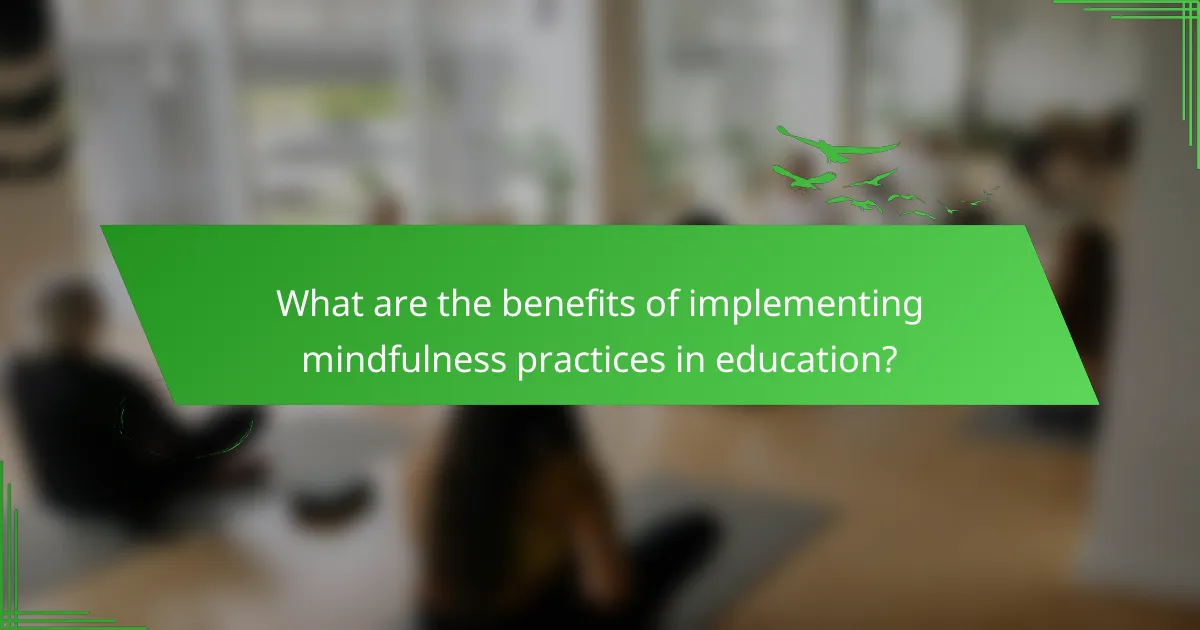
What are the benefits of implementing mindfulness practices in education?
Implementing mindfulness practices in education enhances student focus, emotional regulation, and overall well-being. These practices foster a positive learning environment and improve academic performance. Research indicates that mindfulness can reduce stress and anxiety among students, promoting resilience and better interpersonal relationships. Schools that incorporate mindfulness report increased engagement and decreased behavioral issues, contributing to a healthier school culture.
How does mindfulness improve student well-being?
Mindfulness significantly enhances student well-being by reducing stress and improving emotional regulation. It fosters greater focus, resilience, and overall mental health. Research shows that mindfulness practices can lead to a 30% decrease in anxiety levels among students. Additionally, these practices promote a positive classroom environment, enhancing social connections and academic performance. Implementing mindfulness techniques, such as meditation and breathing exercises, can create a supportive space for students to thrive.
What impact does mindfulness have on academic performance?
Mindfulness practices positively impact academic performance by enhancing focus, reducing stress, and improving emotional regulation. Research indicates that students who engage in mindfulness techniques experience better concentration and retention of information. For example, a study found that mindfulness training led to a 15% increase in academic achievement among participants. Additionally, mindfulness fosters a supportive learning environment, encouraging collaboration and reducing anxiety during assessments. Implementing these practices in educational settings can lead to sustained improvements in student outcomes.
How does mindfulness foster emotional intelligence in students?
Mindfulness enhances emotional intelligence in students by promoting self-awareness and empathy. Through mindfulness practices, students learn to recognize and regulate their emotions, leading to improved interpersonal relationships. Research indicates that students engaged in mindfulness training demonstrate greater emotional resilience and better conflict resolution skills. This cultivation of emotional intelligence fosters a supportive learning environment, enabling students to thrive academically and socially.
What are the long-term benefits of mindfulness for educators?
Mindfulness practices offer long-term benefits for educators, enhancing their well-being and effectiveness. Regular mindfulness reduces stress, improves focus, and fosters emotional resilience. Studies indicate that educators who practice mindfulness report increased job satisfaction and better classroom management. Additionally, mindfulness promotes a positive learning environment, benefiting both teachers and students.
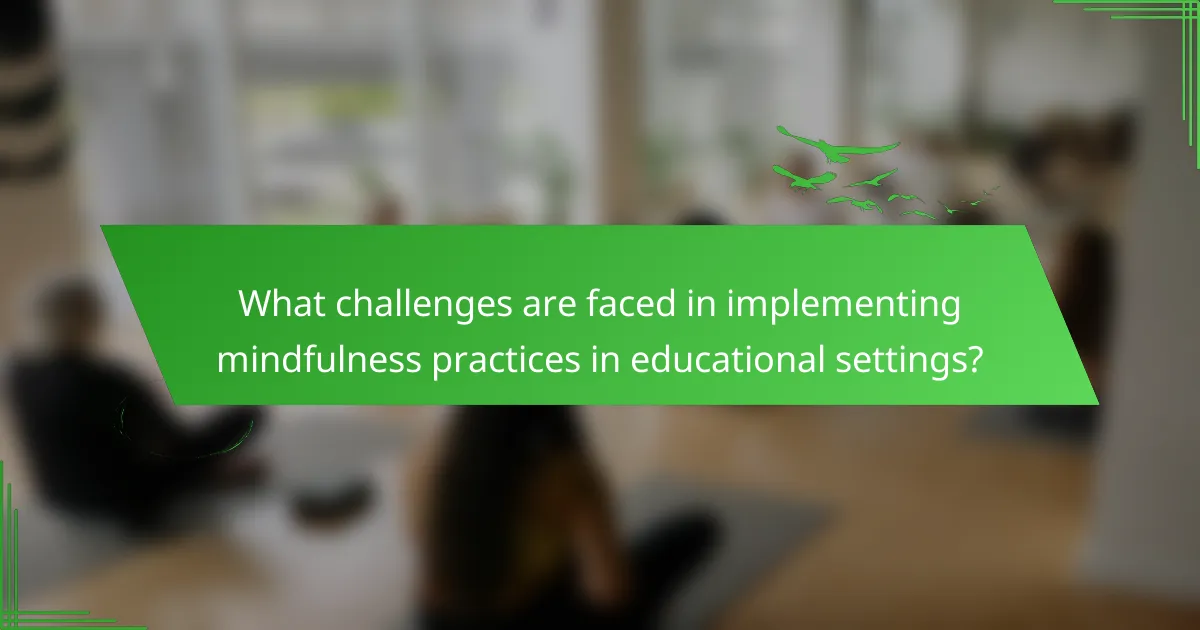
What challenges are faced in implementing mindfulness practices in educational settings?
Implementing mindfulness practices in educational settings faces several challenges. Resistance from educators and administrators can hinder adoption. Limited training opportunities for teachers often result in inadequate implementation. Additionally, varying student needs complicate the application of standardized mindfulness techniques. Time constraints within the curriculum may also restrict the integration of mindfulness practices. Finally, measuring the effectiveness of these practices can be difficult, leading to skepticism about their benefits.
What are common misconceptions about mindfulness in schools?
Common misconceptions about mindfulness in schools include the belief that it only benefits students with anxiety and that it requires extensive training. In reality, mindfulness practices can enhance overall student well-being and are accessible to all educators. Another misconception is that mindfulness is merely a relaxation technique; it actually fosters focus, emotional regulation, and resilience. Some educators also think that mindfulness takes too much time; however, even brief sessions can yield significant benefits.
How can resistance to mindfulness practices be addressed?
Resistance to mindfulness practices can be addressed through gradual exposure and tailored approaches. Educators can introduce mindfulness techniques in small, manageable doses to reduce overwhelm. Providing relatable examples and demonstrating benefits can help students connect with the practice. Encouraging a supportive environment fosters openness and reduces resistance. Regular feedback and adjustments based on student experiences enhance engagement and effectiveness.
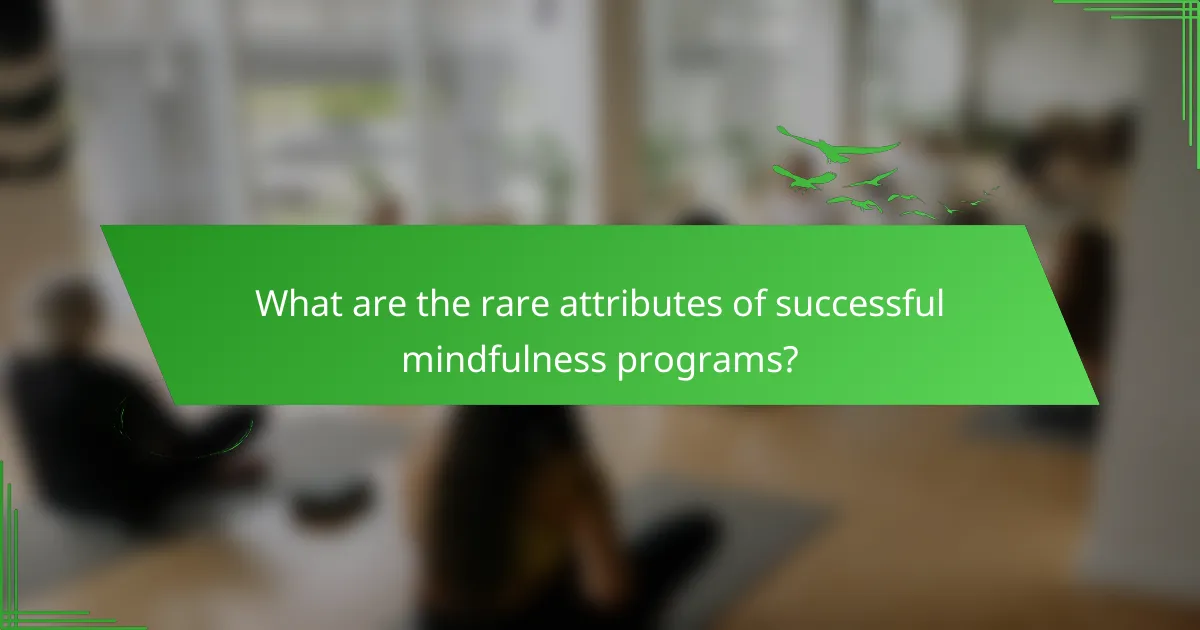
What are the rare attributes of successful mindfulness programs?
Successful mindfulness programs often exhibit rare attributes such as adaptability to diverse learning environments, integration with technology, evidence-based practices, and community involvement. These elements enhance engagement and effectiveness, setting them apart from traditional programs. Programs that incorporate feedback loops for continuous improvement and culturally relevant practices also demonstrate unique strengths.
What innovative methods have emerged in mindfulness education?
Innovative methods in mindfulness education include integrating technology, experiential learning, and community involvement. For example, apps like Headspace provide guided practices, while schools implement mindfulness curricula through interactive workshops. These approaches enhance engagement and accessibility, fostering emotional resilience and academic performance. Research indicates that mindfulness training can reduce stress and improve focus among students, making it a valuable tool in modern education.
How do community partnerships enhance mindfulness practices in schools?
Community partnerships significantly enhance mindfulness practices in schools by providing resources, expertise, and support. These collaborations offer access to trained professionals who can guide mindfulness programs and workshops, ensuring effective implementation. Additionally, partnerships foster a supportive environment where students can practice mindfulness in diverse settings, reinforcing its importance. Schools benefit from shared knowledge and innovative strategies, leading to improved student well-being and academic performance.
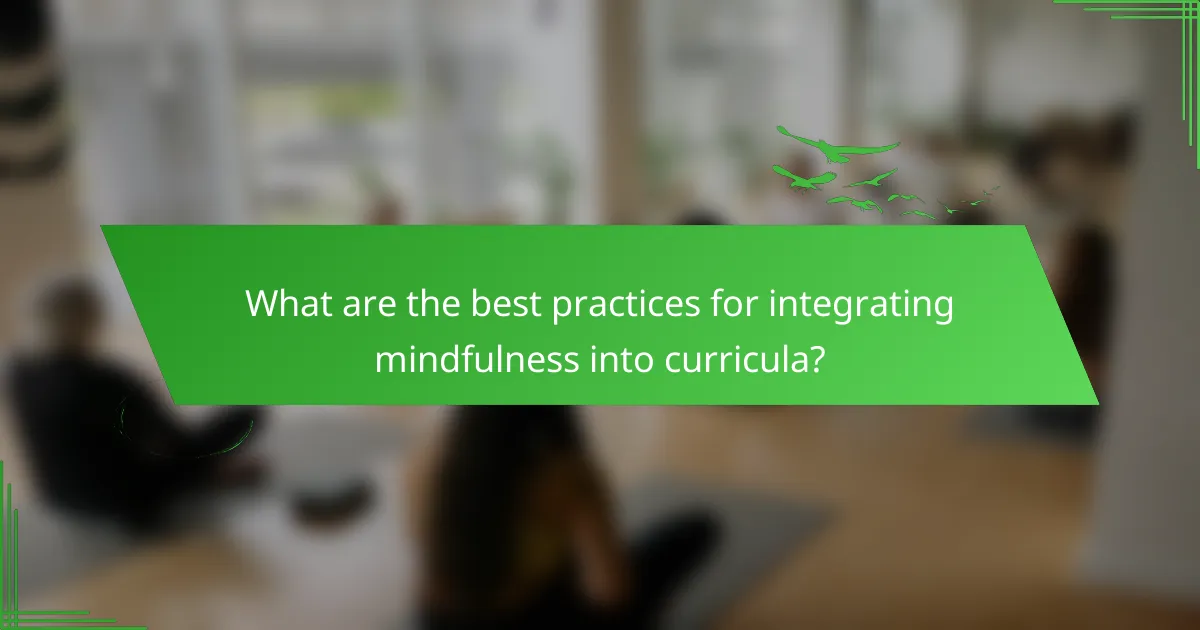
What are the best practices for integrating mindfulness into curricula?
Integrating mindfulness into curricula enhances student well-being and focus. Best practices include incorporating short mindfulness exercises, creating a calm classroom environment, training educators in mindfulness techniques, and encouraging reflection through journaling. These strategies foster emotional regulation and improve academic performance.
How can teachers be trained effectively in mindfulness techniques?
Effective training for teachers in mindfulness techniques involves structured programs that incorporate practical exercises and ongoing support. These programs should focus on experiential learning, allowing educators to practice mindfulness themselves, which enhances their understanding and ability to teach it.
Research indicates that teachers trained in mindfulness report reduced stress and increased well-being, leading to improved classroom environments. Techniques such as guided meditations, breathing exercises, and mindful movement can be integrated into training sessions.
Additionally, providing resources like workshops and peer support groups fosters a community of practice, enabling teachers to share experiences and strategies. Continuous professional development ensures that mindfulness practices remain relevant and effective in educational settings.
What strategies can schools adopt for ongoing mindfulness support?
Schools can adopt various strategies for ongoing mindfulness support, including integrating mindfulness into daily routines, providing professional development for teachers, and creating a supportive school culture. Regular mindfulness sessions can enhance student focus and emotional regulation.
Professional development ensures educators are equipped to teach mindfulness effectively, promoting consistency across classrooms. Additionally, fostering a school culture that values mindfulness encourages student participation and community engagement.
Incorporating mindfulness into school policies and practices can lead to long-term benefits, such as improved academic performance and reduced stress levels among students. Schools may also consider partnerships with mental health organizations to provide resources and support.
What role does technology play in mindfulness education?
Technology enhances mindfulness education by providing tools for practice, tracking progress, and facilitating engagement. Digital platforms offer access to guided meditations, mindfulness apps, and virtual classrooms. These resources support personalized learning experiences, making mindfulness techniques more accessible to diverse student populations. As a result, technology plays a critical role in integrating mindfulness into educational frameworks, promoting mental well-being and resilience among learners.
What common mistakes should be avoided when implementing mindfulness?
To successfully implement mindfulness in education, avoid the following common mistakes: neglecting teacher training, overlooking student feedback, failing to integrate practices into the curriculum, and setting unrealistic expectations for outcomes. These errors can hinder the effectiveness of mindfulness initiatives. Teacher training is essential for proper guidance. Student feedback helps tailor practices to their needs. Integration into the curriculum ensures sustainability. Lastly, realistic expectations foster a positive learning environment.
How can mindfulness practices be optimized for diverse student needs?
Mindfulness practices can be optimized for diverse student needs by tailoring techniques to individual learning styles. Incorporating varied practices, such as guided meditation, breathing exercises, and movement-based mindfulness, addresses different preferences. For example, visual learners may benefit from mindful imagery, while kinesthetic learners may engage more through yoga or physical activities.
Additionally, integrating mindfulness into the curriculum can enhance its relevance. Creating a safe space for practice encourages participation and fosters inclusivity. Regular feedback from students helps refine these practices, ensuring they meet evolving needs.
Ultimately, flexibility in implementation is crucial. Adapting mindfulness sessions based on student responses can lead to more effective engagement and better outcomes.
